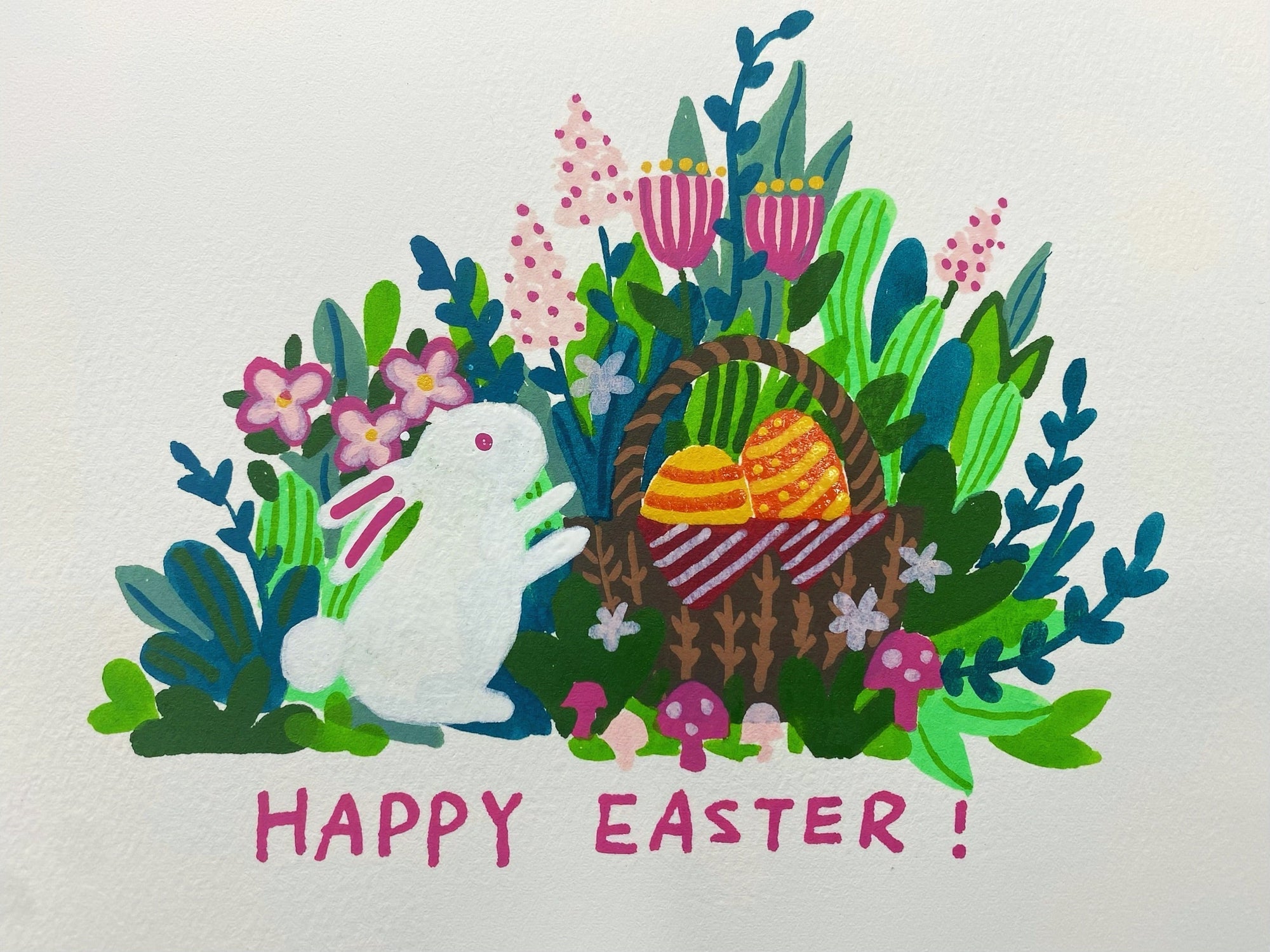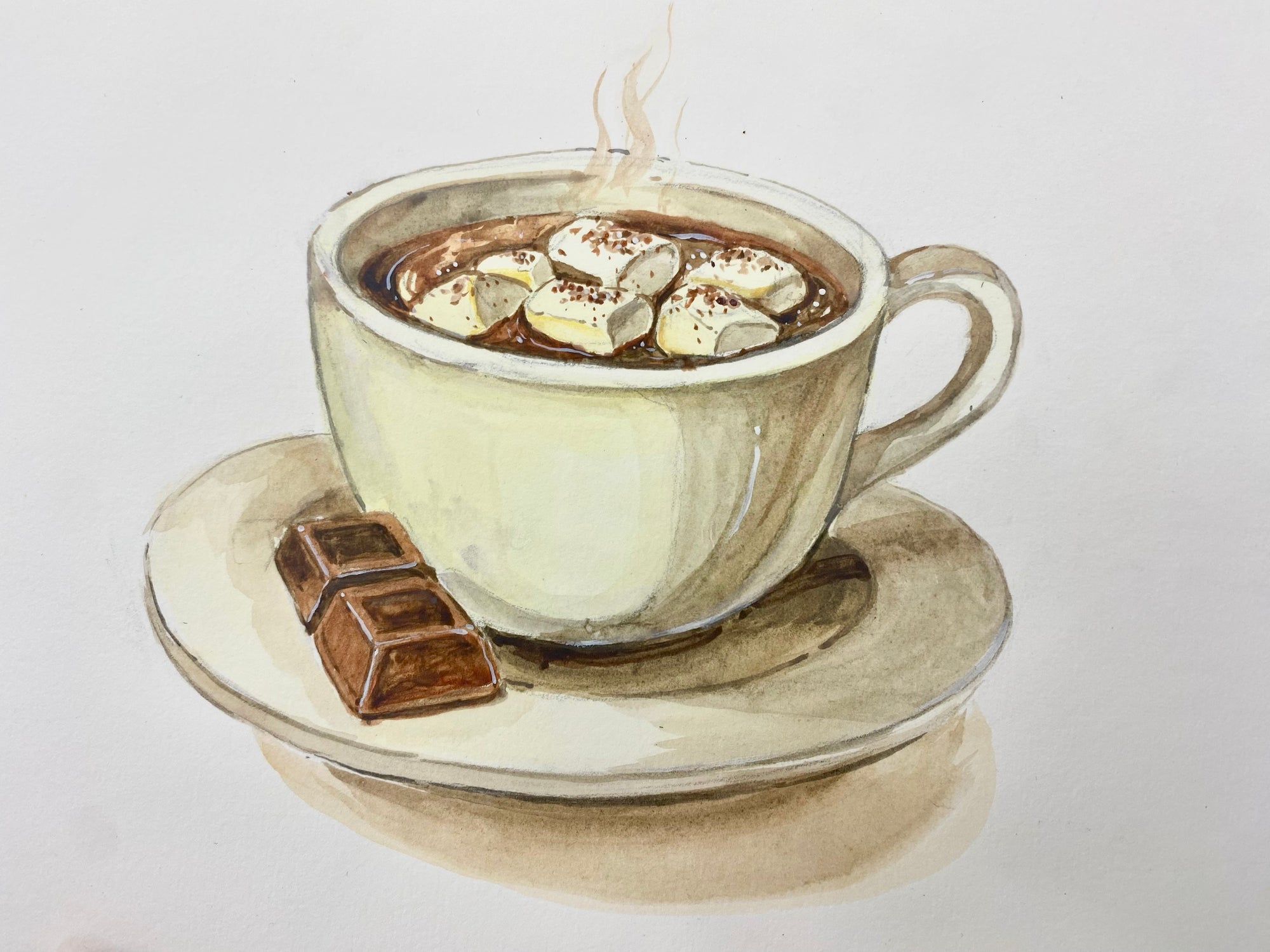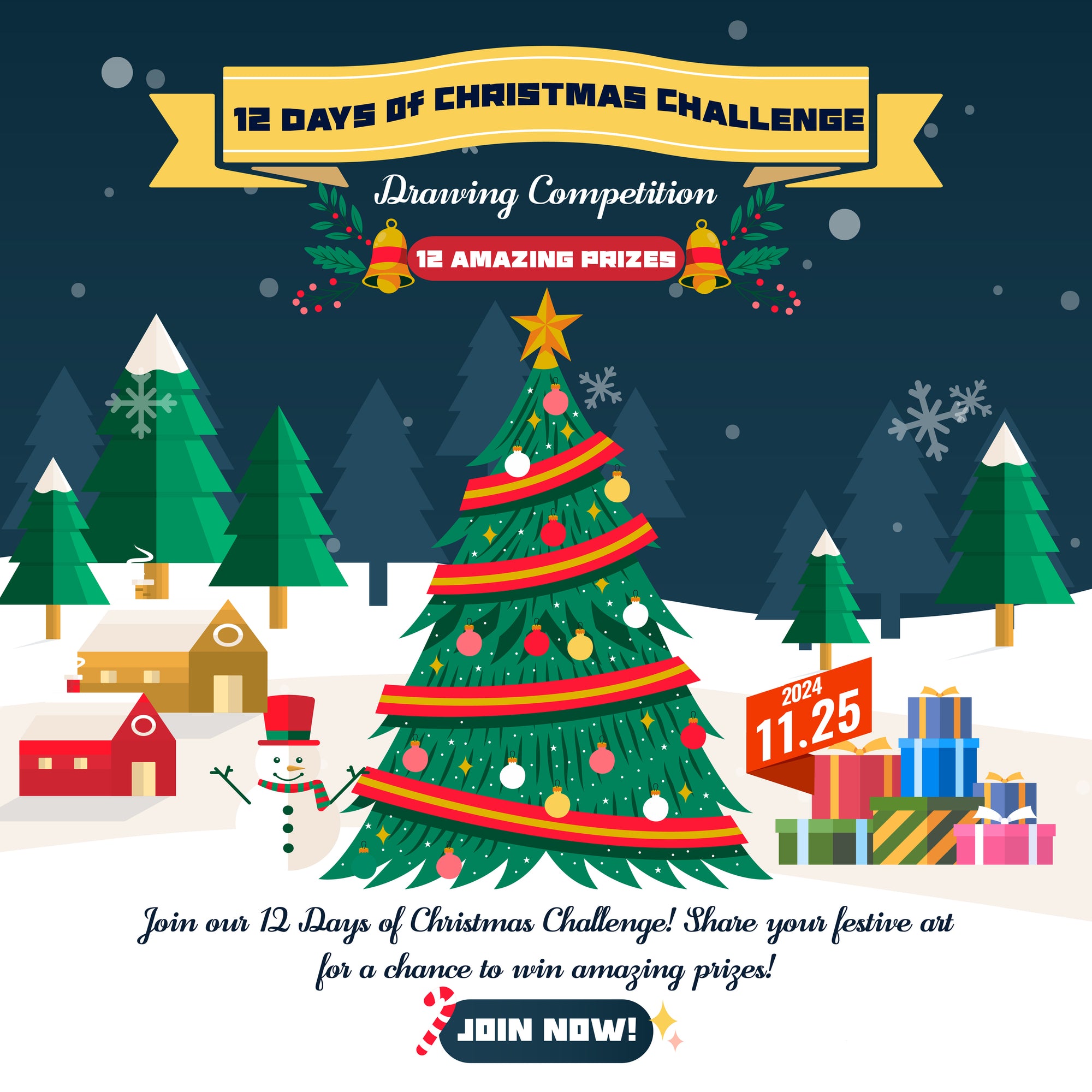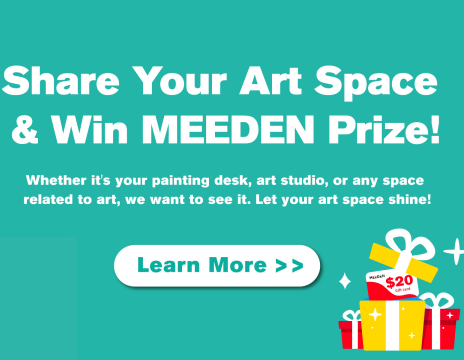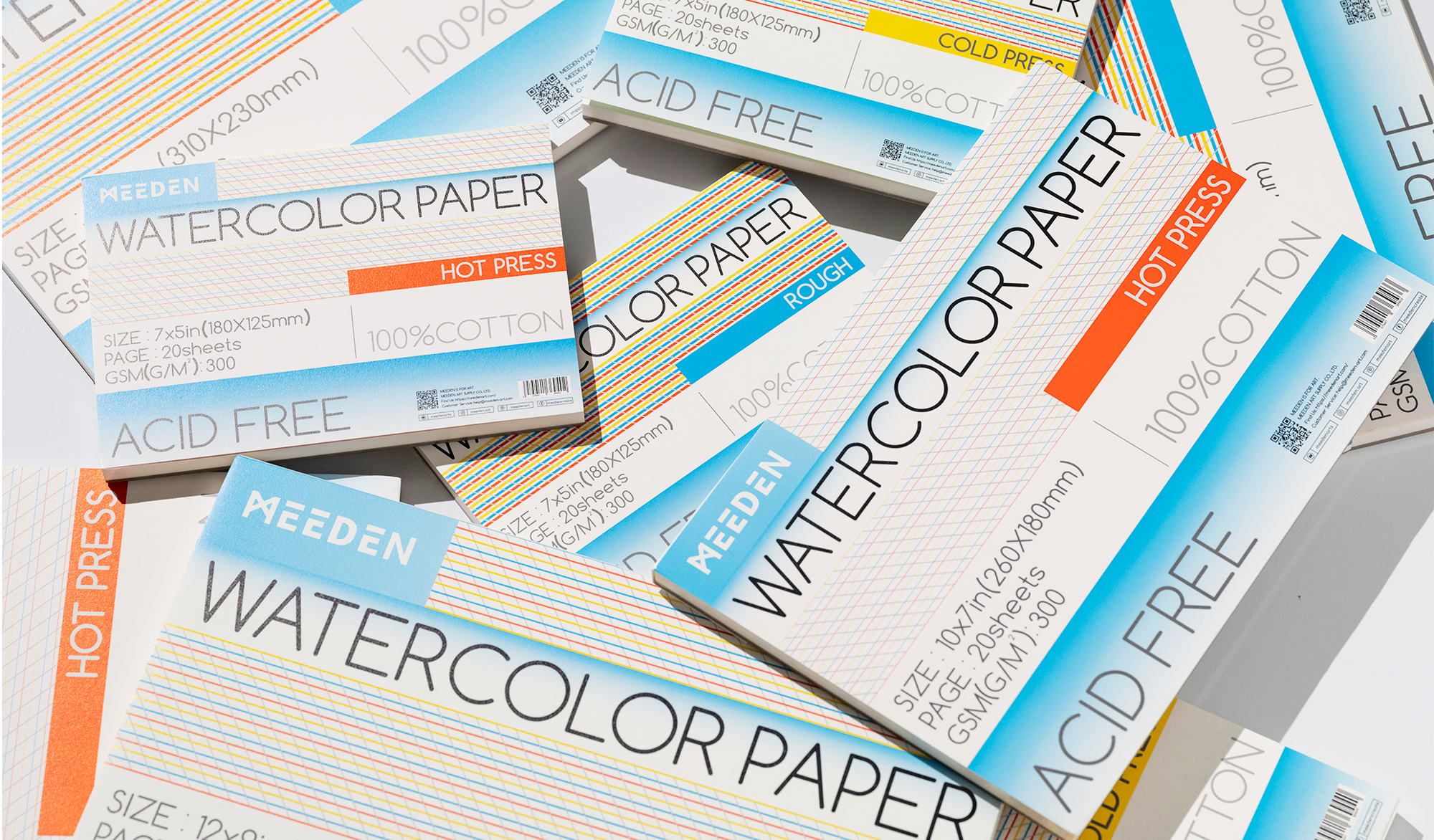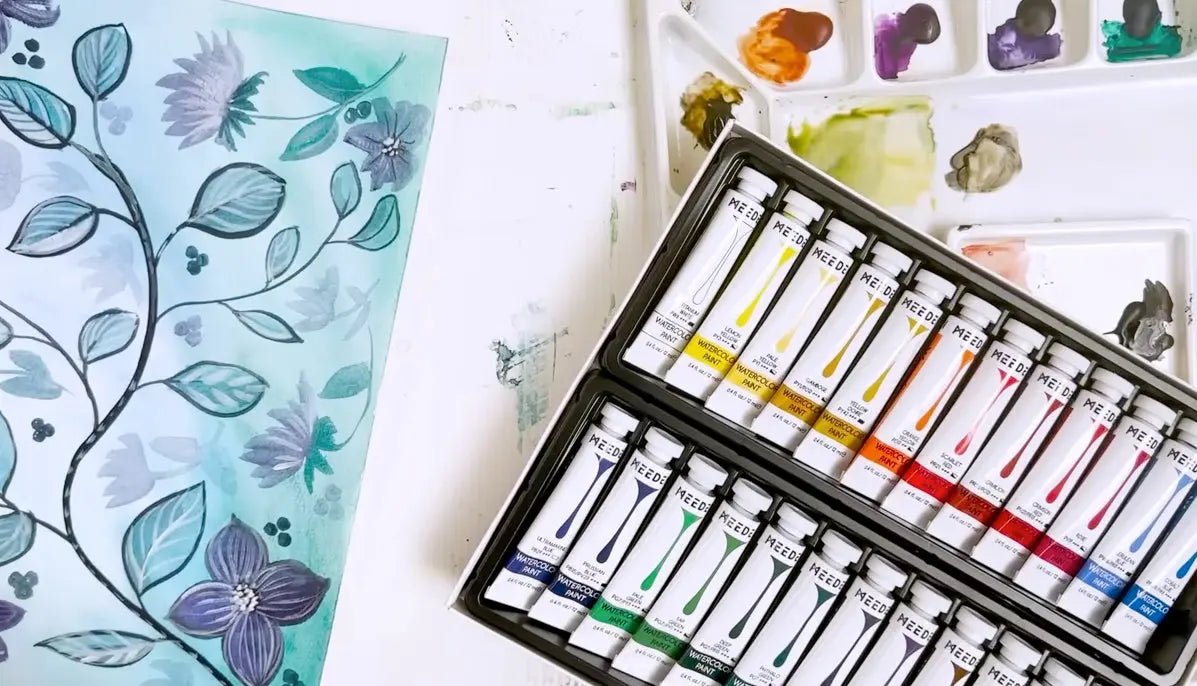In the realm of watercolor painting tools, watercolor paper is undoubtedly the most crucial element. The choice of paper can greatly influence the outcome of your artwork, yielding vastly different visual effects. Using low-quality watercolor paper may result in paper warping, uneven color application, unnatural color bleeding, excessive watermarks, and other issues that can significantly impact the overall quality of your artwork.
In this blog post, we will introduce you to how to choose the best watercolor paper based on four dimensions: texture, material, thickness, and acidity. By understanding these aspects, you will be equipped with the knowledge to make an informed decision when choosing watercolor paper that suits your artistic style and preferences.
Part1: Understanding Watercolor Paper Texture: Hot Press vs Cold Press vs Rough
Hot press, cold press, and rough are the three common surface textures found in watercolor paper, with the most noticeable difference being the varying level of surface roughness.

Exploring Hot Press Watercolor Paper: Smoothness and Delicacy
Among the three surface textures found in watercolor paper, hot press stands out as the smoothest and most delicate. With its absence of texture to hold onto pigment and water, hot press paper has weaker absorbency, allowing the paint to flow freely and extending the drying time. When layering multiple washes, the surface may quickly reach saturation. The smooth surface of hot press paper also reflects light on its flat surface, resulting in vibrant and radiant colors in the artwork. It provides a seamless experience when using pencils or pens for line work, making it ideal for highly detailed compositions.

The Versatility of Cold Press Watercolor Paper: A Balance of Texture
Among the three surface textures found in watercolor paper, cold press offers the widest range of applications. With its slight tooth, it strikes a balance between the smoothness of hot press paper and the roughness of rough paper, allowing artists to capture intricate details while maintaining a desirable texture. This dual advantage of fine and coarse textures makes cold press paper a safe and reliable choice for beginners venturing into the world of watercolor painting.

Exploring the Charms of Rough Watercolor Paper: Bold Texture
Rough watercolor paper stands out among the three surface textures, with its coarse and highly granulated surface. This texture allows pigments and water to penetrate the small peaks and valleys, resulting in strong absorbency and limited paint flow. As a result, rough paper offers a shorter drying time compared to other varieties. The rough surface of this paper causes light to scatter, resulting in less vibrant colors. Despite this, the unique texture of rough watercolor paper adds an artistic touch to paintings, creating a visual experience that embraces an elegant blur and a mesmerizing aesthetic.

Summary: How to Choose Between Hot Press, Cold Press, and Rough Watercolor Paper
Comparison Table:

Consider your artistic intentions and preferences when selecting the appropriate watercolor paper.
- Hot Press: If you aim to achieve vibrant colors and clear details in your artwork, hot press paper is the recommended choice.
- Cold Press: If you are seeking a balance between texture and detailing or uncertain about the preferred surface texture, cold press paper is a suitable option.
- Rough: If you look to showcase bold and pronounced texture effects, rough watercolor paper with its strong textured surface, is the preferred choice.
For beginners, it is recommended to start with a medium texture paper, such as cold press, but it is also encouraged to explore different types of papers to experiment and discover their personal preferences. Each type offers unique possibilities that cater to different styles and techniques, elevating the overall creative experience.
Check out the color comparison of our various watercolor paper textures in the image below:

For more details, please refer to artist Diane's tutorial video.
Part2: Understanding Watercolor Paper Materials: Wood Pulp vs Cotton Fiber
Watercolor papers available in the market are commonly made from pure wood pulp, pure cotton, or a blend of wood pulp and cotton fibers. Selecting the right material will contribute to achieving the desired results in your watercolor creations.

Wood Pulp Paper:
Most inexpensive watercolor papers are made from wood pulp. However, wood pulp paper tends to have lower absorbency, making it prone to producing unwanted marks and not ideal for smooth color rendering. As a result, it may not be the preferred choice for professional artists or those seeking high-quality results.
Cotton Fiber Paper:
On the other hand, watercolor papers made from cotton fibers are more durable and offer excellent absorbency. Cotton fiber papers can withstand multiple wettings without damage, allowing artists to work with layers and achieve desired effects. The fine fibers of cotton also contribute to even and natural color application, resulting in a pleasing painting experience.
Part3: Understanding Watercolor Paper Thickness
The thickness of watercolor paper is measured by its weight per unit area, commonly referred to as grammage (gsm or g/m²), which indicates the weight of the paper per square meter. Higher grammage indicates a thicker and more durable paper that can withstand multiple washes and layering without warping or damage, while lower grammage papers are more prone to deformation.

Paper with weights below 160gsm is very prone to deformation when exposed to water. For example, ordinary A4 printing paper typically has an average thickness of around 80gsm.
300gsm is considered a critical point in paper stability. Papers below this weight may deform when repeatedly exposed to water and are not suitable for multiple layers of color. However, papers with a grammage of 300gsm and above show minimal deformation and are better suited for watercolor techniques that involve layering and reworking.
Part4: Understanding Watercolor Paper pH Value
When it comes to preserving artwork, in addition to choosing lightfast pigments, opting for acid free paper is a vital consideration. The presence of acidity in paper can not only lead to discoloration and deterioration but also potentially react with the pigments, resulting in poor color rendering or fading.
The pH value of watercolor paper refers to its level of acidity or alkalinity. A neutral pH value of around 7 is considered ideal for preserving artwork. Acid-free watercolor paper typically has a pH value above 7, ensuring a neutral or slightly alkaline environment.

Benefits of Acid-Free Watercolor Paper:
- Longevity: Acid-free watercolor paper can withstand the test of time, allowing your artwork to be preserved for years without significant deterioration.
- Color Preservation: By using acid-free paper, you minimize the risk of color fading or distortion, ensuring that your watercolor paintings retain their vibrancy and original appearance.
- Mold Prevention: Acid-free paper discourages the growth of mold and mildew, protecting your artwork from potential damage caused by moisture.
All professional-grade papers are acid-free. By selecting acid-free paper, you can ensure that your watercolor paintings remain vibrant, free from discoloration, and resistant to deterioration over time. Investing in high-quality, acid-free watercolor paper is a wise decision for artists who value the long-term preservation of their creations.
Part 5: Why Choose MEEDEN Watercolor Paper
Uncompromising Quality:
MEEDEN watercolor paper is meticulously manufactured with a thickness of 300gsm, providing a sturdy and durable surface for your artwork. The use of pure cotton material ensures excellent water absorption, allowing colors to blend smoothly and creating vibrant and long-lasting results. Additionally, our paper undergoes an acid-free treatment, ensuring its archival quality and preventing yellowing or deterioration over time.

Unbeatable Value:
MEEDEN watercolor paper provides professional-grade quality at a fraction of the price compared to other brands in the market.
Variety of Options:
To cater to different artistic preferences, MEEDEN watercolor paper is available in 3 distinct surface textures and 4 different watercolor paper sizes, ensuring that you can find the ideal fit for your artistic needs.

MEEDEN watercolor paper stands out as a top choice for artists and enthusiasts due to its exceptional quality, unbeatable value, and variety of options. With 100% pure cotton material, a thickness of 300gsm, acid-free treatment, and affordable pricing, our watercolor paper offers the perfect balance of performance and affordability. Explore our range of watercolor papers by clicking the link below and elevate your artistic journey with MEEDEN.
- 7x5" Hot Press,20 Sheets
- 7x5" Cold Press,20 Sheets
- 7x5" Rough,20 Sheets
- 10x7" Hot Press,20 Sheets
- 10x7" Cold Press,20 Sheets
- 10x7" Rough,20 Sheets
- 12x9" Hot Press,20 Sheets
- 12x9" Cold Press,20 Sheets
- 12x9" Rough,20 Sheets
- 4x3" Mini Cold Press, 10 Sheets-5 Pack
Other posts you may enjoy:
- A Guide to Choosing Watercolor Paints For Beginners
- What Is The Distinction Between Different Pigments
- How to Pick the Right Easel-Types, Tips & Pointers
- What Makes MEEDEN Easel So Different?


































